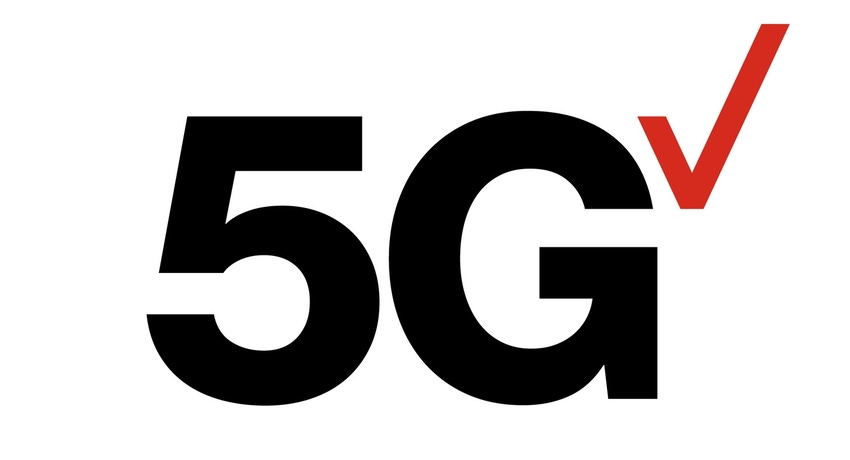Verizon will spend $10 billion over the next three years rolling out 5G on its new C-band spectrum and is completely unphased about making a return on its massive investments.
March 11, 2021

Verizon will spend $10 billion over the next three years rolling out 5G on its new C-band spectrum and is completely unphased about making a return on its massive investments.
Further, it appears than home broadband will play as big a part as mobile in helping the US telco in driving revenue growth from 5G, it emerged at its investor day yesterday, timed to coincide with the close of the FCC’s quiet period on the recently-concluded C-band, or 3.7 GHz, auction.
Let’s get the headline-grabbing figures out of the way first. Verizon spent $52.9 billion at the auction, when incentive payments and clearing costs are factored in and it is upping capex by $10 billion over the next three years, on top of its forecast annual spend, which will come in at $17.5 billion-$18.5 billion this year and similar in future years. It doesn’t really need saying, but yikes, that’s a lot of money.
Or is it? Verizon seems quite relaxed about its spending.
“We have definitely line-of-sight to a return, well above our cost of capital as a result of the investment we made,” both in the auction itself and in the additional network rollout spend, said Verizon’s chief financial officer Matt Ellis, speaking on the telco’s investor call.
“The return is significantly driven the revenue generation,” he said.
While it is building out the C-band Verizon expects to post a 2% increase in service and other revenues this year, but in what it terms the scale period in 2022 and 2023 that revenue uplift grows to 3%, and once the spectrum is rolled out nationwide in 2024 it forecasts growth of 4% or more in revenue.
As for where that revenue growth will come from, well, it’s not just about 5G mobile. Far from it.
The operator’s executives focused in particular on the opportunity from fixed wireless for home broadband, an area in which Verizon has plenty of room to boost its market share. Indeed, as Leichtman Research Group’s latest figures on the US fixed broadband market show, Verizon’s share of the residential broadband space was well under 7% at the end of last year, its customer base being dwarfed by those of major cable players Comcast and Charter and – to a lesser extent – AT&T.
The company’s home broadband offering will combine 4G and 5G – using both mmWave and C-band spectrum – and fibre. There is huge cross-selling potential between the mobile market and home broadband “that affords us the opportunity of a bigger market share,” said Ronan Dunne, CEO of Verizon Consumer Group.
It’s not simply about going after market share in home broadband, he said, “but to convert as many of these homes as possible…into mobile and home customers.” For a mobile customer, the home broadband element “is just another line on their wireless account.” As a result, the telco could see lower subscriber acquisition costs and could possibly exceed its targeted penetration rate of 20% of 30 millions homes covered by fixed wireless – both 4G and 5G – by the end of 2023.
That’s a fairly ambitious target for fixed wireless. But Verizon executives batted away concerns about the telco’s ability to provide the amount of mobile capacity required to serve multiple families’ home broadband requirements, versus the lower demands from a mobile subscription.
Chef executive Hans Vestberg insisted he “feels good” about the capacity Verizon has. “We will compete effectively in this market,” he said.
Meanwhile Dunne chose to cast doubt over the competition instead: “I would ask the question about the cable guys. They will probably have capacity challenges than I will in the short-to-medium term.”
Of course, Verizon’s 5G ambitions are not limited to the home broadband space. It is bullish on mobile customers upgrading to 5G, noting that it expects the half of its consumer postpaid phone base will have a 5G device in the next couple of years, up from 9% at end-2020. Meanwhile, it expects to roll out 5G Ultra Wideband on C-band spectrum to 175 million people over 2022-23, rising to quarter of a billion by 2024 “and beyond” once all the spectrum it acquired at the auction has been cleared by the satellite companies.
It also outlined strong opportunities in the business space, and in new markets like mobile edge computing (MEC), which Vestberg noted presents a $1 billion addressable market in the US by the end of next year, rising to $10 billion by 2025.
So there you have it. The industry may have winced at Verizon’s $50 billion-plus C-band auction spend and the capex hike that was certain to follow, perhaps it’s not so huge a sum to spend when there is a sizeable addressable market out there. Ellis pledged to share figures on Verizon’s fixed wireless home broadband progress – customers and revenues – “towards the end of the year” so we should have a clearer picture of how things are going by then.
About the Author(s)
You May Also Like








.png?width=300&auto=webp&quality=80&disable=upscale)


_1.jpg?width=300&auto=webp&quality=80&disable=upscale)


.png?width=800&auto=webp&quality=80&disable=upscale)